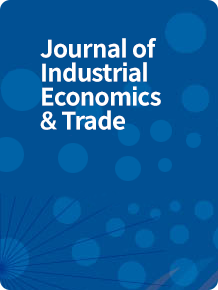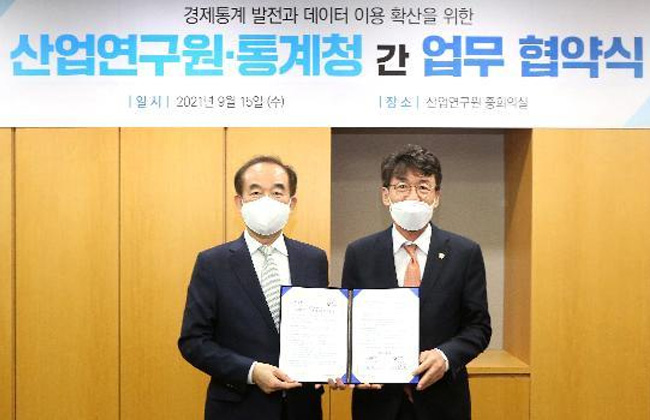Journal of Industrial Economics & Trade

Showing 4 results
-
Economic Analysis for Demand Response using Stochastic Approach in South Korea
Lee Chul-Yong 2025.04.30
UK spec may vary. Based on In the process of implementing carbon neutrality around the world,eco-friendly energy such as renewable energy is expanding. Because renewable energy, however, is highly variable and has a distributed form of energy, new challenges are created in balancing electricity demand and supply at the local level. Korea’s demand response projects have been mainly implemented in industrial and commercial sectors with high electricity consumption, but since 2018, small-scale demand response projects have been implemented for residential use as well. This study targets demand response projects in the industrial, commercial, and residential power sectors and estimates cost-benefit ratio (BC ratio), net present value (NPV), and internal rate of return (IRR). and break-even point (payback period). However, since the demand response project is a project in which the government intervenes and receives national subsidies, it should be analyzed separately from the government perspective and the user perspective. Additionally, in order to reflect the uncertainty of cost and benefit variable, this study intends to perform a stochastic economic analysis using Monte Carlo simulation methods. The result shows that in the case of the residential demand response project, the economic feasibility was very low from the government perspective due to the large amount of government subsidies, but from the user perspective, the economic feasibility was very high. In the case of commercial and industrial demand response projects, it was found that there was a need to expand their distribution as it is a desirable policy that can achieve a win-win for all stakeholders by securing economic feasibility from both the government and user perspectives. -
Energy R&D Investment and Carbon Intensity in OECD Countries
Oh Hyungna; Kim Jee Young 2025.04.30
This study investigates the impact of public research and development (R&D) investment in energy technology on carbon intensity across 30 OECD countries from 1995 to 2020. The results of the empirical exercise, employing the IEA Energy Technology RD&D Budgets database, show that per capita CO2 significantly decreases in the share of energy R&D investment relative to GDP. However, it takes two- to three years to see the effects of these investments. Our findings emphasize the role of carbon pricing mechanisms, such as emissions trading systems and carbon taxation. Robustness tests on the dynamic panel model confirm the impact of energy R&D on emissions reduction.
-
Measuring the Global Value Chain in the Chungcheong Region using Regional and International Input-Output Table
Jeon Kiyoung 2025.04.30
This study examines the participation of the Chungcheong region in the global value chain (GVC), which has a large intermediate trade scale and an economic scale similar to that of Greece and Portugal. To measure the GVC participation of the Chungcheong region, the regional input-output tables of the Bank of Korea and the multi-regional input-output table (MRIO) of the Asian Development Bank (ADB) were integrated and connected in 2010, 2013, and 2015. First, the Chungcheong region was integrated from Daejeon, Sejong, Chungnam, and Chungbuk regions into a regional input-output table composed of two regions: Chungcheong and other regions outside of Chungcheong. The ADB's MRIO was integrated into an international input-output table consisting of Korea and other countries, and the Korean portion of the international input-output table was integrated using the regional input-output table composed of two regions previously prepared. The GVC participation of the Chungcheong region measured using the MRIO was found to be much higher than that of regions outside of Chungcheong and even higher than that of Greece and Portugal with similar economic scales.
When examining the forward and backward participation of the GVC, the Chungcheong region showed a steady rate of around 45% for each during the target period. Furthermore, when divided into simple and complex participation, the forward simple participation rate of the Chungcheong region was higher than its complex participation rate, which was similar to that of regions outside of Chungcheong. However, the backward complex participation rate of the Chungcheong region was higher than its simple participation rate, which was different from other regions outside of Chungcheong. When examining by industry, the GVC participation of the manufacturing industry in the Chungcheong region was higher than that of the service industry, especially in the chemical,
electrical and electronic equipment and precision instruments, and transport equipment industries. However, the transport equipment industry showed a different pattern from other industries, with a higher forward complex participation rate than its forward simple participation rate.
-
Determinants of Export Market Diversification among SMEs in Chungnam Province, South Korea: A Fuzzy-set Qualitative Comparative Analysis
Song Joonheon 2025.04.30
The export structure of South Korea’s Chungnam Province exhibits considerable vulnerability to external shocks, primarily due to its heavy dependence on specific industries, notably the semiconductor and display sectors dominated by large corporations, as well as its concentrated export markets in China and Vietnam. Amid intensifying global economic uncertainties and heightened export volatility, export diversification has emerged as a critical policy imperative for ensuring regional economic resilience and sustainable growth. This study employs both the Herfindahl-Hirschman Index and Theil Index to quantify export concentration patterns, while utilizing fuzzy-set Qualitative Comparative Analysis (fsQCA) to examine the determinants of export market diversification across 39 manufacturing industries among regional SMEs. The analytical framework incorporates six conditional variables: foreign investment, productivity, export competitiveness, firm distribution, product diversity, and large firm dependency.
Through fuzzy-set calibration and truth table analysis, multiple causal configurations leading to export market diversification are identified. The findings demonstrate that export market diversification among SMEs manifests through four distinct patterns: global competitiveness, intra-industry diversification, large firm linkages, and hidden champions. This research advances the understanding of export diversification by systematically analyzing the complex configurations of conditional variables, thereby providing an empirical foundation for developing industry-specific policy interventions to enhance regional export resilience.
Please enter the security text below
to prevent email collection
Please check the information of the person in charge.
연구과제 제안이 접수되었습니다.
신청이 접수되었습니다.


View Summary
코로나19 발생 이후 대부분의 고용 관심사가 항공 및 여행서비스, 음식·숙박 서비스 등 주로 서비스 업종에 집중된 상황에서 본 연구는 최근 그 중요성이 강조되고 있는 제조업의 고용변화를 살펴보았다. 분석에 따르면, 코로나19 이후 제조업 고용은 비교적 큰 충격 없이 빠르게 회복하는 모습을 보이고 있다. 제조업 고용은 서비스업에 비해 큰 충격 없이 유지되고 있고, 코로나19 직후 2020년 상반기에 약간 하락하였지만 하반기부터 회복 추세를 보이고 있으며, OECD 주요국의 제조업과 비교하여도 일본과 함께 고용 충격이 비교적 작게 나타나고 있다. 그러나 전반적으로 양호한 고용 성적에도 불구하고 제조업 내 특성 별로는 차이가 나타나는 것으로 보인다. 종사상 지위 별로 보면, 임시·일용직, 고용원이 있는 자영업자에서 고용 충격이 상대적으로 크게 나타났고, 상용직과 고용원이 없는 자영업자는 큰 충격이 없는 것으로 나타났다. 제조업 규모별로는 300인 이상의 경우 코로나 발생 초기 약간의 충격 이후 고용이 빠르게 반등하면서 코로나 이전보다 고용이 더 증가한 반면, 이보다 작은 규모의 제조업체들의 경우 고용 회복이 더디게 나타나고 있다. 고용의 중장기, 단기 추세선을 비교한 결과 제조업 업종에 따른 차이를 보였다. 코로나 발생 이전 3년간의 추세선을 2020년 1월부터 연장한 선과, 2020년 1월부터의 실제 자료를 이용한 단기 추세선을 비교한 결과, 의약품은 코로나19 발생 이전부터 시작하여 코로나19 발생 이후에도 견조한 증가세를 유지하고 있으며, 전자부품·컴퓨터, 기타운송장비, 가구는 코로나19 이후 오히려 고용 추세가 개선되었다. 그러나 다수 업종은 코로나 발생 이후 고용이 하락하였는데, 특히, 비금속광물, 1차금속, 금속가공 분야나 인쇄·기록매체 업종에서 하락이 상대적으로 크게 나타났다.
The following information is provided.
inform@kiet.re.krPlease complete the CAPTCHA below.
[전지적키에트시점] (Eng sub)심상치 않은
국내 대기업 움직임??
KIET 시점에서 보는 미래 로봇 산업 전망은
어떨까요?
경제전문가가 알려드립니다!
(산업연구원 박상수 실장)


